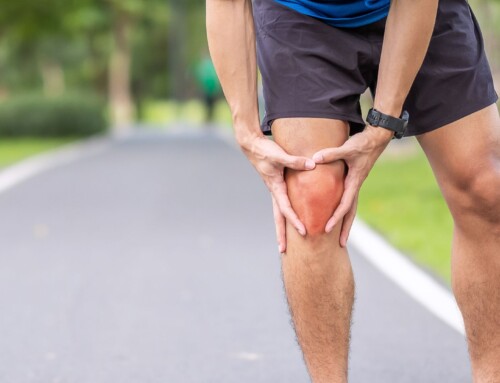Intro
Coccydynia, also known as tailbone pain, can be a debilitating condition that affects the lowest part of the spine. This pain is often caused by injury or strain to the coccyx, the small triangular bone at the bottom of the spine. While it may seem like a minor issue, coccydynia can greatly impact one’s daily life and mobility. However, with proper coccydynia treatment, relief is possible. In this blog post, we will explore some effective treatments for coccydynia that can help alleviate pain and discomfort.
Understanding Coccydynia – What Exactly Is Tailbone Pain?
Coccydynia, also known as tailbone pain, is a condition that affects the lowest part of the spine and can cause debilitating pain and discomfort. Understanding what coccydynia is and its causes is essential in finding effective treatment options.
The coccyx, also referred to as the tailbone, is a small triangular bone located at the bottom of the spine. It consists of three to five fused vertebrae and serves as an attachment site for various ligaments and muscles. When this area becomes injured or strained, it can lead to coccydynia.
Coccydynia can have various causes, including trauma from a fall or direct impact to the tailbone, prolonged sitting on hard surfaces, repetitive activities that strain the coccyx, or even childbirth. In some cases, coccydynia may be associated with other conditions such as sciatica or rectal pain.
The most common symptom of coccydynia is pain in the tailbone region. This pain can range from mild to severe and may worsen with sitting, standing up from a seated position, or activities that put pressure on the coccyx. Some individuals may also experience tenderness, swelling, or bruising in the affected area.
If you suspect you have coccydynia, it is important to seek a proper diagnosis from a healthcare professional. They will review your medical history, perform a physical examination, and may order additional tests such as X-rays or MRI scans to rule out other underlying conditions.
Fortunately, many cases of coccydynia can be treated non-surgically through conservative management options. These can include lifestyle modifications, such as avoiding prolonged sitting, using cushioned seats, or practicing good posture. Physical therapy exercises and stretches may also help to strengthen the surrounding muscles and provide relief.
In more severe cases, surgery may be necessary to alleviate coccydynia symptoms. This can involve removing a portion of the coccyx or repositioning it to relieve pressure on the surrounding structures.
If you are living with coccydynia, it is important to seek support and make necessary lifestyle adjustments to manage the condition. This may include finding ergonomic solutions for sitting, using cushions or pillows for added comfort, and seeking emotional support from friends, family, or support groups.
At Wake Spine & Pain, we understand the impact that coccydynia can have on your daily life. Our team of experts specializes in diagnosing and treating coccydynia, tailoring treatment plans to address your specific needs.
The Tell-Tale Signs: Symptoms of Coccydynia
Coccydynia, also known as tailbone pain, can be a frustrating and debilitating condition that affects the lowest part of the spine. Understanding the symptoms of coccydynia is crucial in seeking proper treatment and finding relief. So, what exactly are the tell-tale signs that you may be dealing with coccydynia?
The most common symptom of coccydynia is pain in the tailbone region. This pain can range from mild to severe and is often described as a sharp, aching, or throbbing sensation. The pain may worsen with activities that put pressure on the coccyx, such as sitting for long periods, standing up from a seated position, or leaning back. Some individuals may also experience tenderness, swelling, or bruising in the affected area.
In addition to pain, coccydynia can cause discomfort during activities such as sitting or having bowel movements. You may find it difficult to find a comfortable sitting position or may experience pain and pressure in the rectal area. Some individuals with coccydynia may also experience radiating pain down the legs, which can be similar to sciatica.
Coccydynia can have various causes, including trauma from a fall or direct impact to the tailbone, prolonged sitting on hard surfaces, repetitive activities that strain the coccyx, or even childbirth. It’s important to note that coccydynia can also occur during pregnancy due to the increased pressure on the tailbone.
If you are experiencing any of these symptoms, it’s essential to seek a proper diagnosis from a healthcare professional. They will review your medical history, perform a physical examination, and may order additional tests such as X-rays or MRI scans to rule out other underlying conditions.
Getting a Proper Diagnosis for Coccydynia
Getting a proper diagnosis for coccydynia is crucial in finding effective treatment options and finding relief from tailbone pain. If you are experiencing symptoms such as pain, tenderness, swelling, or bruising in the tailbone region, it’s important to seek a medical professional’s guidance.
To start the diagnosis process, your healthcare provider will first review your medical history and ask you questions about your symptoms. They may inquire about any recent falls, injuries, or activities that may have caused strain on your coccyx. It’s important to provide as much information as possible to help them understand your condition better.
Next, a physical examination will be performed to assess the affected area. Your healthcare provider may gently palpate the tailbone region and ask you to describe any pain or discomfort you experience during the examination. They may also perform a rectal examination to rule out any other potential causes of your symptoms.
In some cases, your healthcare provider may order additional tests to confirm the diagnosis of coccydynia. X-rays can help identify any fractures or dislocations in the coccyx, while MRI scans can provide more detailed images of the tailbone and surrounding structures. These tests can help rule out other potential causes of your symptoms, such as tumors or infections.
Once a proper diagnosis of coccydynia is made, your healthcare provider can develop a personalized treatment plan to address your specific needs. This plan may include a combination of non-surgical treatments, such as lifestyle modifications, physical therapy exercises, and pain management techniques.
Remember, getting a proper diagnosis is the first step towards finding relief from coccydynia. By working closely with a healthcare professional, you can gain a better understanding of your condition and find effective treatment options to alleviate your pain and discomfort. Don’t hesitate to reach out and seek professional help if you suspect you may have coccydynia.
At Wake Spine & Pain, our team of experts specializes in diagnosing and treating coccydynia. We are here to provide the support and guidance you need to overcome tailbone pain and improve your quality of life. Contact us today to schedule a consultation and take the first step towards finding relief from coccydynia.
Treating Coccydynia Non-Surgically: Conservative Management Options
If you’re dealing with coccydynia, also known as tailbone pain, you’ll be pleased to know that many cases can be treated non-surgically through conservative management options. These treatment options aim to provide relief from coccydynia pain without the need for invasive procedures or surgery. So, let’s explore some effective conservative management options that can help you find relief.
One of the first steps in managing coccydynia is making lifestyle modifications. Avoiding prolonged sitting and using cushioned seats can help alleviate pressure on the coccyx and reduce pain. Practicing good posture is also important, as it can help relieve strain on the tailbone.
Physical therapy exercises and stretches can be beneficial in strengthening the surrounding muscles and reducing pain. Your healthcare provider or a physical therapist can recommend exercises tailored to your specific needs. These exercises may include pelvic tilts, gentle stretches, and strengthening exercises for the core and glute muscles.
In some cases, the use of specialized cushions or pillows can provide additional comfort and support. Cushions designed specifically for coccydynia often have a cutout or contour to relieve pressure on the tailbone while sitting.
For individuals experiencing coccydynia during pregnancy, additional support and relief can be achieved through the use of maternity cushions or pillows. These cushions provide support to the lower back and tailbone area, helping to alleviate discomfort caused by increased pressure during pregnancy.
Pain management techniques can also be effective in providing temporary relief from coccydynia. These can include over-the-counter pain medications, such as nonsteroidal anti-inflammatory drugs (NSAIDs), or topical pain-relieving creams or gels.
In some cases, your healthcare provider may recommend corticosteroid injections to reduce inflammation and provide temporary pain relief. These injections are administered directly into the affected area and can provide relief for several weeks to months.
It’s important to remember that everyone’s experience with coccydynia is unique, and what works for one person may not work for another. It may take some trial and error to find the right combination of conservative management options that provide optimal relief for your specific symptoms.
Remember to always consult with a healthcare professional before starting any new treatment or exercise program. They can provide guidance and ensure that your treatment plan is tailored to your specific needs and medical history.
In the next section, we will explore when surgery may be necessary for coccydynia and how to cope with this condition through lifestyle adjustments and support.
When Is Surgery Necessary for Coccydynia?
When dealing with coccydynia, also known as tailbone pain, many cases can be effectively treated with non-surgical options. However, in certain situations, surgery may be necessary to provide relief and improve quality of life. Understanding when surgery is necessary for coccydynia is crucial in exploring all available treatment options and making informed decisions about your healthcare.
In general, surgery for coccydynia is considered a last resort when conservative management options have failed to alleviate symptoms. If you have tried lifestyle modifications, physical therapy exercises, pain management techniques, and other non-invasive treatments without significant improvement, surgery may be an option to consider.
There are several surgical procedures that can be performed to address coccydynia. One common surgical option is a coccygectomy, which involves the removal of part or all of the coccyx. This procedure aims to eliminate the source of pain and discomfort by removing the damaged or inflamed tissue.
Another surgical option is a coccygeal manipulation, which involves manually repositioning the coccyx to relieve pressure on the surrounding structures. This can be performed under anesthesia and is often done in combination with other procedures, such as corticosteroid injections, to maximize the effectiveness of treatment.
It’s important to note that surgery for coccydynia is not without risks, and the decision to undergo surgery should be carefully considered in consultation with your healthcare provider. Potential risks and complications of surgery include infection, bleeding, nerve damage, and prolonged recovery time.
Before opting for surgery, your healthcare provider will likely conduct a thorough evaluation and discuss the potential benefits and risks of the procedure. They will take into account factors such as the severity of your symptoms, your overall health, and your willingness to undergo a surgical intervention.
While surgery may provide significant relief for some individuals with coccydynia, it is important to remember that it is not always a guaranteed solution. Every case of coccydynia is unique, and what works for one person may not work for another. It’s essential to work closely with your healthcare provider to determine the best course of action for your specific situation.
Coping with Coccydynia: Lifestyle Adjustments and Support
Living with coccydynia, or tailbone pain, can be challenging and often requires lifestyle adjustments to manage the condition effectively. While there may not be a one-size-fits-all solution, making certain lifestyle changes can help alleviate pain and improve your quality of life.
One of the most important adjustments you can make is to avoid activities that worsen your coccydynia symptoms. This may include avoiding sitting for prolonged periods or using cushioned seats to reduce pressure on the tailbone. Practicing good posture is also crucial as it can help alleviate strain on the tailbone.
Engaging in physical therapy exercises and stretches can also provide relief from coccydynia pain. These exercises aim to strengthen the surrounding muscles, improving support for the tailbone. Your healthcare provider or a physical therapist can recommend exercises tailored to your specific needs, such as pelvic tilts, gentle stretches, and core and glute strengthening exercises.
For individuals experiencing coccydynia during pregnancy, additional support and relief can be achieved through the use of maternity cushions or pillows. These cushions provide support to the lower back and tailbone area, helping to alleviate discomfort caused by increased pressure during pregnancy.
Managing pain is also an essential aspect of coping with coccydynia. Over-the-counter pain medications, such as nonsteroidal anti-inflammatory drugs (NSAIDs), can help reduce inflammation and alleviate pain temporarily. Topical pain-relieving creams or gels can also provide localized relief.
In addition to these lifestyle adjustments, seeking emotional support can also play a crucial role in coping with coccydynia. Living with chronic pain can be emotionally challenging, and finding support from friends, family, or support groups can provide a sense of understanding and comfort.
Remember, every individual’s experience with coccydynia is unique, and it may take time to find the right combination of lifestyle adjustments that provide optimal relief. Working closely with your healthcare provider can help you develop a comprehensive treatment plan tailored to your specific needs and ensure you receive the support and guidance necessary to manage coccydynia effectively.
At Wake Spine & Pain, our team of experts understands the impact coccydynia can have on your daily life. We are here to provide the support and guidance you need to cope with tailbone pain. Contact us today to schedule a consultation and take the first step towards finding relief from coccydynia.
The Role of Wake Spine & Pain in Your Coccydynia Treatment
At Wake Spine & Pain, we understand the impact that coccydynia can have on your daily life. Our team of experts specializes in diagnosing and treating coccydynia, tailoring treatment plans to address your specific needs.
When you come to Wake Spine & Pain for your coccydynia treatment, you can expect personalized care and support throughout your journey. Our experienced healthcare professionals will work closely with you to develop a comprehensive treatment plan that aims to alleviate your pain and improve your quality of life.
First and foremost, we prioritize accurate diagnosis. Our team will review your medical history and perform a thorough physical examination to assess your condition. We may also order additional tests, such as X-rays or MRI scans, to rule out any other underlying conditions that may be contributing to your symptoms.
Once a proper diagnosis of coccydynia is made, we will discuss all available treatment options with you. Our team believes in a multidisciplinary approach to treatment, meaning we will consider a combination of non-surgical treatments that are tailored to your specific needs.
Conservative management options are often the first line of treatment for coccydynia. We will work with you to implement lifestyle modifications, such as avoiding prolonged sitting or using cushioned seats, to relieve pressure on the coccyx. Physical therapy exercises and stretches will also be incorporated into your treatment plan to strengthen the surrounding muscles and reduce pain.
If conservative treatments do not provide sufficient relief, we may recommend other non-surgical options. These may include corticosteroid injections to reduce inflammation or pain management techniques to help you cope with your symptoms.
In rare cases where conservative treatments have been ineffective, surgery may be considered. Our team of skilled surgeons can perform procedures such as coccygectomy or coccygeal manipulation to address the underlying cause of your coccydynia and provide relief.
Throughout your treatment, our team will be by your side, offering support and guidance every step of the way. We understand the emotional impact that coccydynia can have, and we are here to provide the necessary support to help you cope with your condition.
If you are struggling with coccydynia, don’t hesitate to reach out to us at Wake Spine & Pain. Our team is dedicated to providing compassionate care and finding effective solutions for your tailbone pain. Contact us today to schedule a consultation and take the first step towards finding relief from coccydynia.







